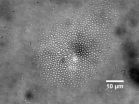(Press-News.org) CORVALLIS, Ore. – Cervical cancer rates for Hmong women are among the highest in the nation, yet past research has shown that cervical and breast cancer screening rates for this population are low – in part because of the Hmong's strong patriarchal culture.
However, a new study by Oregon State University researchers examining attitudes regarding breast and cervical cancer screening among Oregon's Hmong population shows a much more complicated picture. The study found that Hmong women often make their own health decisions, but in an environment in which screening is not discussed.
The study, recently published online in Health Education Research, is the first to look at the role of Hmong patriarchal and family influences on women's breast and cervical cancer screening. It is also one of the only studies conducted with Oregon's Hmong population.
Lead author Sheryl Thorburn, a professor of public health at Oregon State University, conducted the study with Jennifer Kue, a Portland native and member of the Hmong community. Kue is now an assistant professor at the Ohio State University.
According to the researchers, about 3,600 Hmong live in Oregon, with the majority centered in the Portland metro area. They interviewed more than 80 Hmong people in Portland and Salem - not only women ages 18 years and older, but also men, including husbands and male leaders in the community.
In the study, the majority of women and men reported that women make health decisions independently, and that, in general, breast and cervical cancer screening was not discussed in the household.
"What we are seeing from our study is that the Hmong culture is evolving," Kue said. "It may not be the same for Hmong women everywhere. This is one piece of the puzzle."
The Hmong first came to the United States in the 1970s as refugees from Southeast Asia. They played a central role in supporting the U.S. during the Vietnam conflict, and hundreds of thousands of Hmong were relocated to the United States.
Previous research suggests that strong patriarchal influence as well as suspicion of Western medicine could be barriers to cancer screening among women, and that men may make the decisions about critical medical conditions of Hmong women. However, those earlier studies did not survey both men and women about family influences on cancer screening.
Kue, who conducted the research while doing her doctoral studies at OSU, said she was surprised at the amount of autonomy reported by both male and female respondents. There also seemed to be greater use of health services among the Oregon Hmong interviewed.
For instance, 75 percent of women in the study had a clinical breast examination at least once; 79 percent of women 40 and older had received a mammogram at some point in their lives; and 84 percent of women had gone to the doctor for a Pap smear. In comparison, the few national studies conducted of Hmong women show low rates of breast and cervical cancer screening, ranging from 27 to 74 percent.
However, Kue said these results do not mean that health barriers do not exist.
"It is not enough to have been screened once because we want women to get screened regularly," Kue said. "There have been so few studies done of the Hmong that it can be difficult to draw conclusions. What we do know is that this is a population at high risk."
Still, the researchers said they were surprised that so few people reported that husbands or other male family members were influencing decisions. What their study did show was that overall, most women did not talk about their health with their husband or family members, and kept screening decisions private.
"In our culture, we place a heavy emphasis on communal decision-making and it's male-dominant, so I would have expected men to have more influence," Kue said.
Thorburn said this qualitative study helps researchers who follow up to shape their research.
"Without this exploratory study, people might have gone in with a lot of assumptions that may not be correct about the culture," Thorburn said. "It gives us a completely different picture and tells us this is more complicated. It's not men deciding whether or not women get screened because women of all ages said they have control and make the decisions about their health."
INFORMATION:
The research was conducted with the help of a Community Advisory Committee, made up of nine Hmong community members and leaders. This key principle of community-based research was one of the ways the researchers were able to get buy-in from the closely-knit Hmong people.
Karen Levy Keon, formerly with Oregon State University and Ann Zukoski with Rainbow Research contributed to this research study, which was funded by the National Cancer Institute.
First study of Oregon's Hmong reveals surprising influences on cancer screenings
2013-01-08
ELSE PRESS RELEASES FROM THIS DATE:
U-M sibling study discovers genetic region linked to control of key blood-clotting protein
2013-01-08
ANN ARBOR—In 2006, the lab of Dr. David Ginsburg at the Life Sciences Institute put a call out for siblings attending the University of Michigan to donate blood for a study of blood-clotting disorders.
The samples were collected over three years and have now enabled the researchers to identify the specific parts of the genome responsible for levels of a key substance for blood clotting. The findings were reported online Dec. 24 in the Proceedings of the National Academy of Sciences.
Von Willebrand disease is the most common hereditary blood-clotting disorder—it's more ...
Postpartum depression prevalent in under-developed countries, could impact baby health and mortality
2013-01-08
ANN ARBOR, Mich. — Postpartum depression not only affects mothers but it could mean higher health risks for the baby – especially in low-income countries like Ghana where the condition isn't well-recognized, University of Michigan Health System research shows.
Efforts to reduce child mortality and improve infant growth, health, and nutritional status in less-developed countries must address the mental health of new moms, the study suggests.
Two-thirds of participating mothers of sick, hospitalized babies in Ghana showed high risk for symptoms of clinical depression ...
New biochip technology uses tiny whirlpools to corral microbes
2013-01-08
WEST LAFAYETTE, Ind. - Researchers have demonstrated a new technology that combines a laser and electric fields to create tiny centrifuge-like whirlpools to separate particles and microbes by size, a potential lab-on-a-chip system for medicine and research.
The theory behind the technology, called rapid electrokinetic patterning - or REP - has been described in technical papers published between 2008 and 2011. Now the researchers have used the method for the first time to collect microscopic bacteria and fungi, said Steven T. Wereley, a Purdue University professor of mechanical ...
Concentrated solar power with thermal energy storage can help utilities' bottom line, study shows
2013-01-08
The storage capacity of concentrating solar power (CSP) can add significant value to a utility company's optimal mix of energy sources, a new report by the U.S. Department of Energy's National Renewable Energy Laboratory (NREL) suggests.
The report found that CSP with a six-hour storage capacity can lower peak net loads when the sun isn't shining, enough to add $35.80 per megawatt hour to the capacity and operational value of the utility, compared to photovoltaic (PV) solar power alone, and even higher extra value when compared to CSP without storage. The net load is ...
National Academy of Inventors inaugural conference highlights innovative technologies
2013-01-08
TAMPA, Fla. (Jan. 8, 2013)—The current special issue of "Technology and Innovation-Proceedings of the National Academy of Inventors" is devoted to presentations from the Inaugural Conference of the National Academy of Inventors (NAI), which was hosted by the University of South Florida, Feb. 16-17, 2012.
"This conference brought together inventors, researchers and leaders from universities, nonprofit research institutions, national laboratories and government institutions to discuss issues pertaining the technological development and commercialization," said Paul R. Sanberg, ...
A new point of reference for offshore energy development
2013-01-08
AUSTIN, Texas - A new Department of Energy research facility could help bring the U.S. closer to generating power from the winds and waters along America's coasts and help alleviate a major hurdle for offshore wind and ocean power development.
Will Shaw, an atmospheric scientist at DOE's Pacific Northwest National Laboratory, will describe plans for the facility at an 11:45 a.m. talk today at the 93rd American Meteorological Society Annual Meeting, which runs through Thursday in Austin, Texas.
The Reference Facility for Offshore Renewable Energy will be used to test ...
EARTH: Superquakes, supercycles, and global earthquake clustering
2013-01-08
Alexandria, VA – The size and type of earthquakes a given fault system may produce remain poorly understood for most major fault systems. Recent superquakes, such as the March 2011 magnitude-9 off Japan and the December 2004 magnitude-9-plus off Sumatra, have been far larger than what most scientists expected those faults to produce. The problem is that current models rely on short historical records, and even shorter instrumental records. Today, scientists are working to rewrite these models based on new paleoseismic and paleotsunami data to create a more comprehensive ...
Fussy babies spend more time in front of the TV
2013-01-08
Moms, especially those who are obese, are more likely to use TV to entertain and soothe infants who are more fussy and active, according to researchers at the University of North Carolina at Chapel Hill. The finding adds to the growing body of knowledge that may help explain the escalating rate of obesity and inactivity in U.S. children, and has led to behavioral and educational strategies that may help mothers combat these effects.
The study, led by nutritionist Margaret E. Bentley, is the first to examine the interplay of maternal and infant risk factors that lead ...
Global warming beneficial to ratsnakes
2013-01-08
URBANA – Speculation about how animals will respond to climate change due to global warming led University of Illinois researcher Patrick Weatherhead and his students to conduct a study of ratsnakes at three different latitudes—Ontario, Illinois, and Texas. His findings suggest that ratsnakes will be able to adapt to the higher temperatures by becoming more active at night.
"Ratsnakes are a species with a broad geographic range so we could use latitude as a surrogate for climate change," Weatherhead said. "What are ratsnakes in Illinois going to be dealing with given ...
Stem cell materials could boost research into key diseases
2013-01-08
Stem cell manufacturing for drug screening and treatments for diseases such as Huntington's and Parkinson's could be boosted by a new method of generating stem cells, a study suggests.
Scientists have developed a family of compounds that can support the growth of human embryonic stem cells on a large scale for use in drug testing or treatments.
The new materials, which are water-based gels, act as a tiny scaffold to which cells can cling as they grow. Normally cells must be grown on expensive biological surfaces that can carry pathogens and contaminate cells.
Once ...


